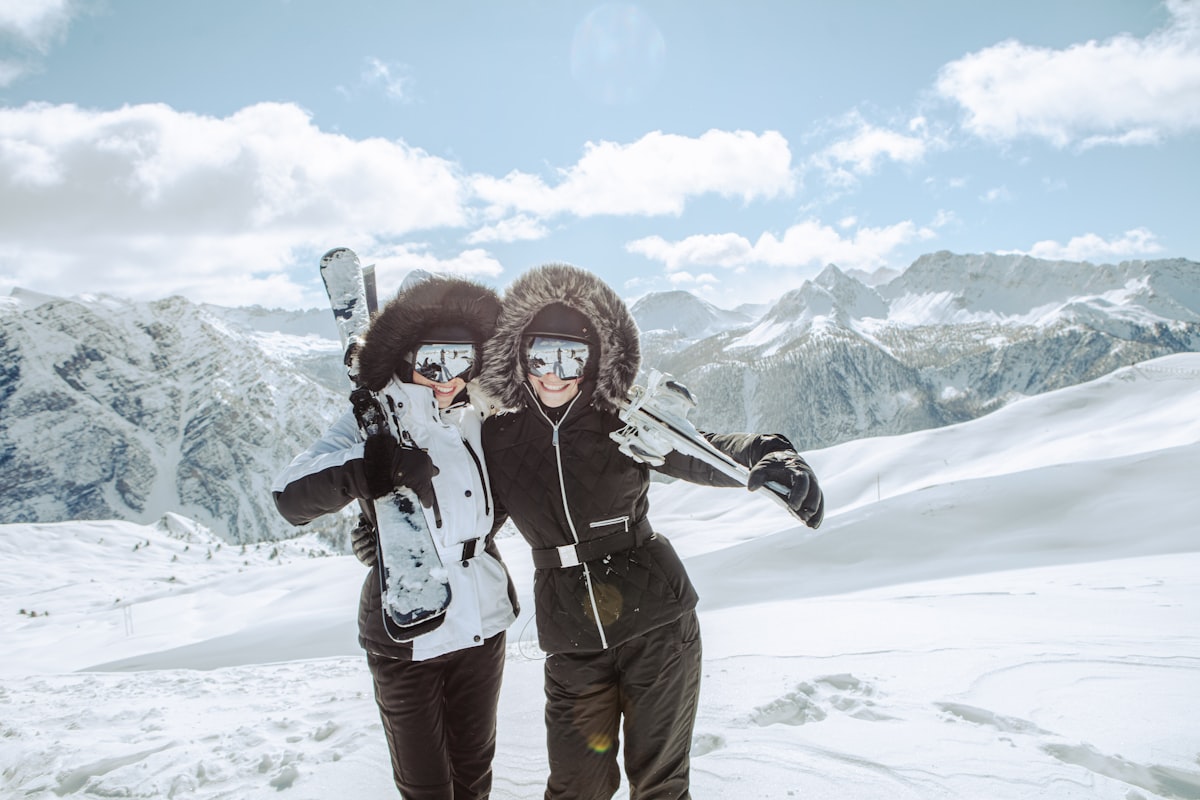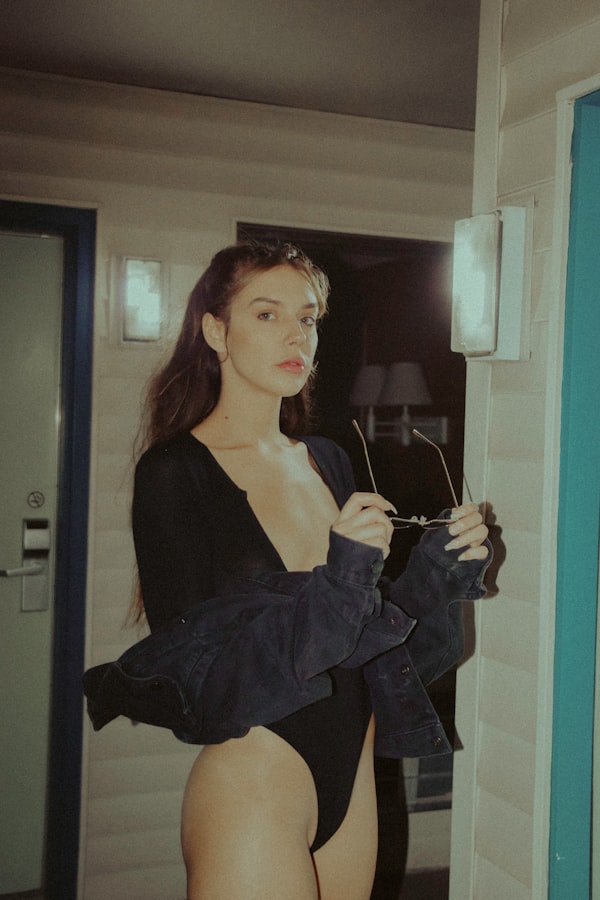Skiing is a fun and exciting winter activity, but it's not complete without the best ski goggles for women. Ski goggles are worn to protect your eyes from the elements while skiing, including sun, wind, and snow. They also help to prevent glare on the slopes so that you can focus on what's directly in front of you.
Ski goggles come in a number of different styles, including those with sealed lenses or flat ones with vents that allow air through for ventilation. If you're looking for more coverage than just your eyes and want all-around protection from the elements while skiing, then a pair of ski masks might be right for you. The type of goggle you choose depends on your personal preferences as well as what kind of activity you'll be doing while skiing (e.g., alpine or cross-country).
The materials used in ski goggles vary depending on design but most are made out of plastic or polycarbonate materials that provide durability and impact resistance while still being lightweight enough to wear comfortably throughout an entire day at the mountain or trail. While some models have interchangeable lenses depending on conditions, others have fixed lenses that are color coordinated according to their design so they look stylish too!
How We Choose
We looked at a variety of factors when choosing the best ski goggles for women, including fit, style, lens quality and visibility. We also considered the opinions of other female skiers while test-driving different pairs.
We only included goggles on our list that met or exceeded our expectations in terms of fit and quality. We also made sure to choose a range of styles so you can find one that appeals to your tastes.
OutdoorMaster Ski Goggles with Cover
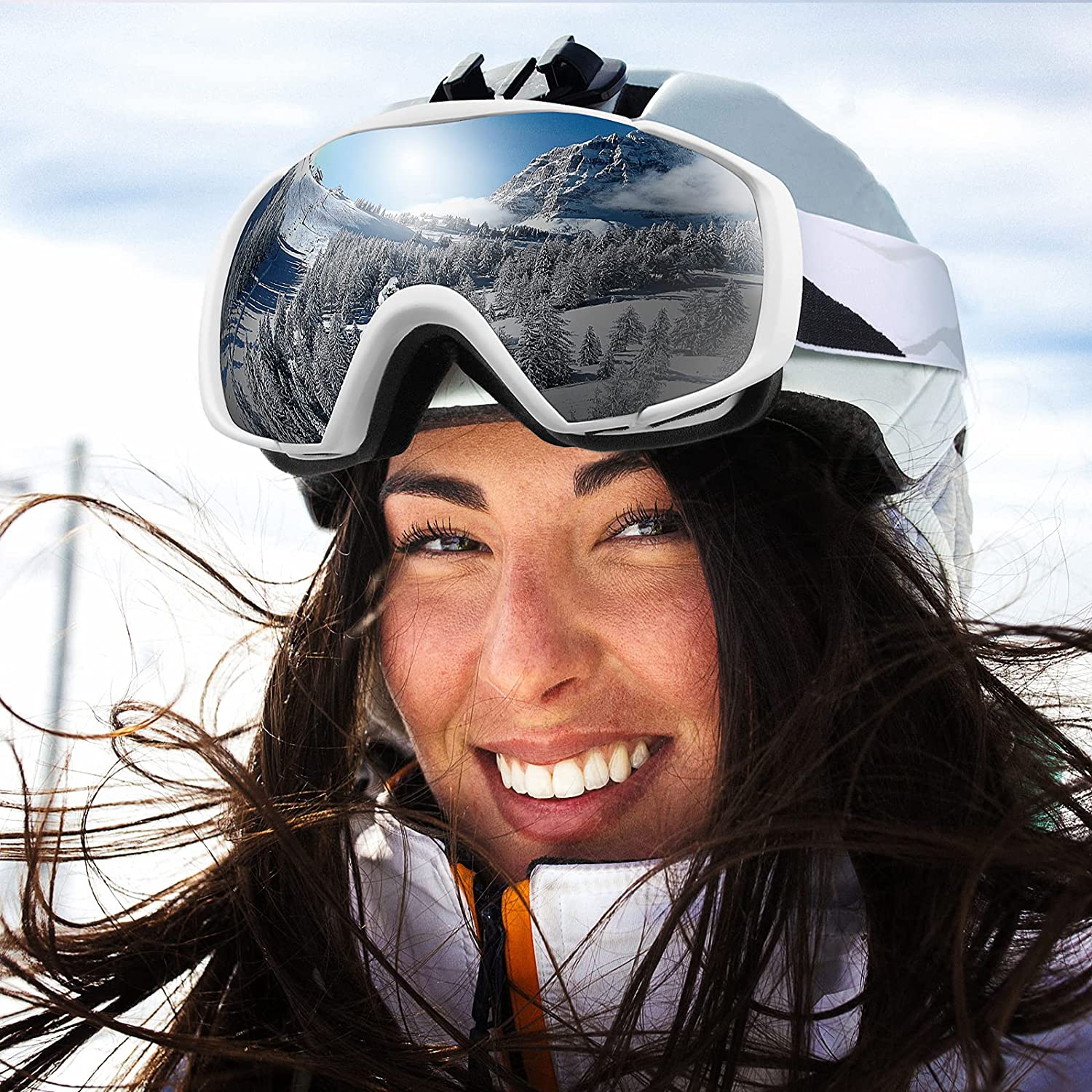
The OutdoorMaster Ski Goggles are a great pair of goggles for skiers and snowboarders, especially if you want them to be both durable and comfortable. They're not the most stylish, with their big rectangular frame, but they work well for deflecting wind, fogging less easily and keeping snow out.
There's no denying that these goggles are bulky because of their shape and sturdy build - which helps them to keep out the elements - but they do offer good protection against drops or falls. The straps on these goggles can be adjusted quickly to ensure a snug fit too.
Our only issue with these goggles is that they feel bulkier than other pairs we tested simply because of how thick the foam is across the inside of each lens. That makes it harder to see through at times too, although this can help improve visibility in some conditions like rain or snowstorms.
ZIONOR Lagopus Ski Snowboard Goggles
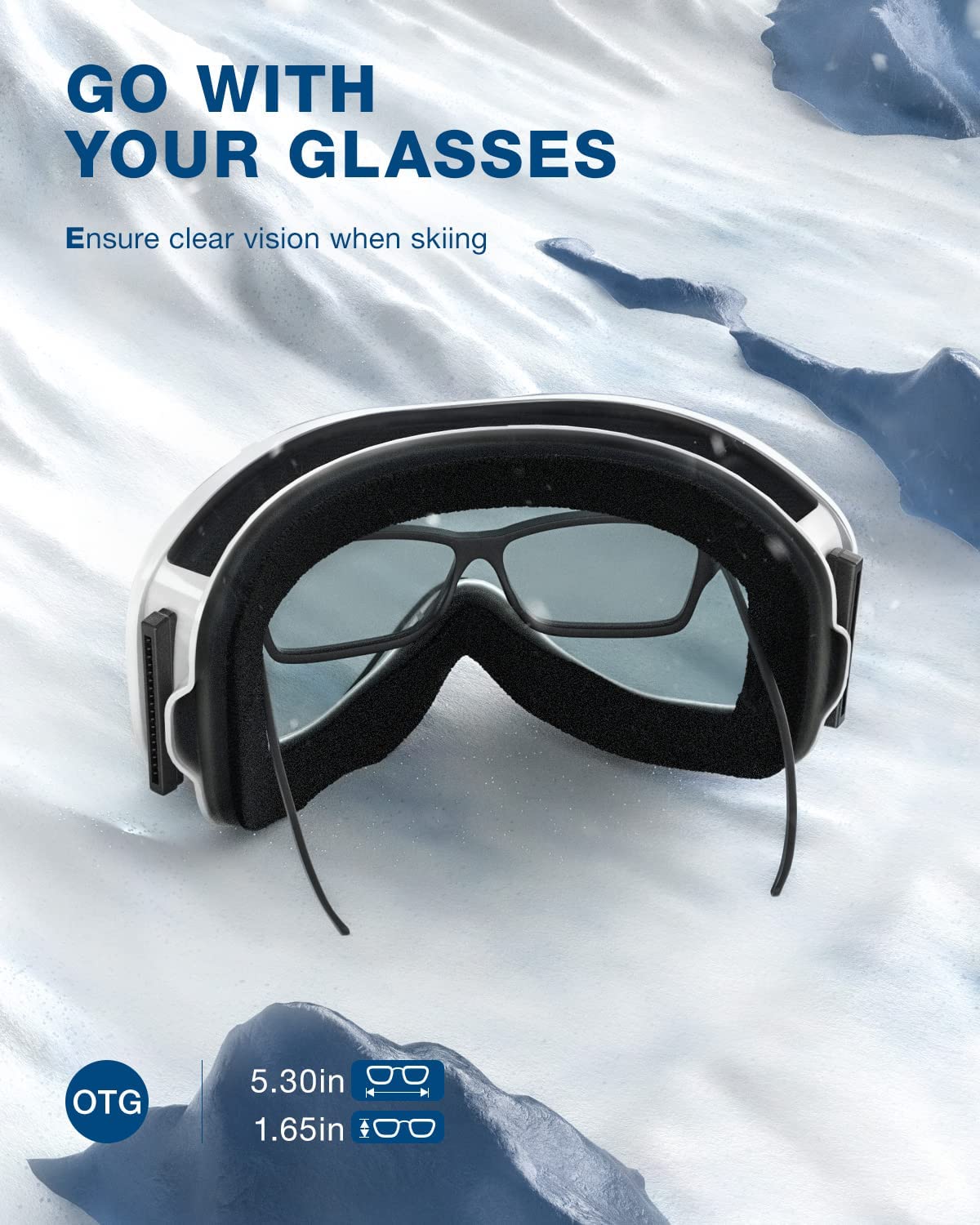
The Zionor Lagopus Ski Goggles are an affordable option for beginners and intermediates who want to get into the sport safely. They're super light, making them easy to wear on long treks, and they come with a nice set of features including 100% UVA protection, anti-fog and good scratch resistance.
The frames are made from ABS plastic which is sturdy enough for most users. There's also a smart ventilation system which helps keep the goggles comfortable in use, while the high-density foam strap helps ensure your goggles stay in place during intense activity.
While these aren't ideal for those looking to go pro, they're great beginner ski goggles that offer solid protection against snow particles and UV rays too.
WildHorn Outfitters Roca Ski Goggles for Women
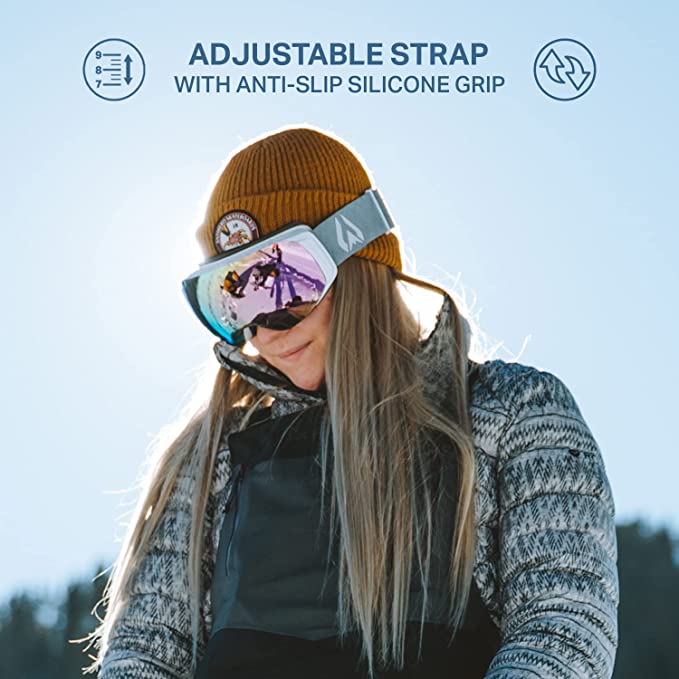
The Roca Snow Goggles by Wildhorn Outfitters are a great pair of snowboarding goggles for kids or beginners. They're fully adjustable to ensure a perfect fit, and they come with seven interchangeable lenses so you can adapt them to suit your light conditions.
The frame itself is made from Thermoplastic Polyurethane (TPU), which is shatterproof, while the outer coating on that makes these goggles waterproof to 100% without compromising vision. The downside of this design is that it's not super breathable so they can get warm after long sessions in the snow.
As they're semi-frameless goggles, they do make it easy to swap between lenses quickly if needed - ideal if you want to try out different shades or filter types - but there's no way to adjust these independently of each other. This means you won't be able to switch between clear and tinted lenses as easily as some other pairs we've reviewed here.
Ski Goggles Womens FAQs
Winter is coming, and you know what that means. You're going to need a new pair of ski goggles!
It can be tough knowing which ones are the best for you. There are so many different types and brands, it can be hard to know where to start your search. We've compiled some of the most Frequently Asked Questions about ski goggles below, along with our top answers.
Is There A Difference Between Mens And Womens Ski Goggles?
Mens and womens ski goggles are designed to fit the shape of the face differently, so that they don't leak or press uncomfortably against your face. Mens goggles tend to curve in at the bottom so they sit well below a hat, while women's googles usually curve upwards to accommodate a hat or helmet.
While some companies have started making unisex ski goggles that are smaller and lighter, most models are still gender specific due to sizing and design. It is worth finding out what type of goggle best fits your face shape before you buy them.
What Color Lens Is Best For Skiing?
The best lenses for skiing will obviously depend on the conditions. If it's a bright, sunny day you'll want to go for lenses that offer the highest level of UV protection. On overcast days with potential for snow showers, contrast enhancing lenses are ideal as they'll help you see better in poor visibility conditions. If you're worried about getting splashed by snowmobiles or other skiers while riding chairlifts, opt for 100% waterproof lenses.
What Kind Of Goggles Do You Need For Skiing?
When choosing the best ski goggles for you, it's important to consider a few factors. First, you need to think about what kind of weather conditions you'll be skiing in. If there's a good chance of high winds and snow storms then you should focus on buying goggle that are windproof and waterproof. It might seem obvious but it's worth remembering that some goggles will only work properly if you're wearing a helmet!
Most goggles have an adjustable band at the back so this can be twisted to tighten or loosen them as needed. You may also want to invest in nose plugs specifically made for snow sports as they'll give your nostrils some protection against the cold as well as any powdery snow that may get kicked up by other skiers.
Why Is Everyone Wearing Ski Goggles On The Slopes?
It's actually a pretty smart idea. Ski goggles don't seal completely around the eyes, so some of your exhaled breath ends up in front of your lenses. If you've ever been on the slopes when there was heavy snow and wind, you know how much this can affect visibility.
Ski goggles are also not sealed at the sides and top, so as you move through cold air, moisture can collect in places that aren't protected by the insulation inside your helmet. Goggles solve both of these problems very effectively.
Do Beginners Need Ski Goggles?
It's important to wear ski goggles on the slopes, even if you're just learning. If you don't wear a pair of goggles, your eyes are vulnerable to wind and snow while you're out on the mountain. Additionally, if it begins to rain while you're skiing, snow can get into your eyes without a pair of goggles in place.
It's smart for beginners to invest in a good pair of ski goggle because they will protect your eyes from the elements as well as harsh sunlight. Many experts recommend choosing a goggle that has UV protection built in so that you can focus on learning how to ski rather than protecting your eyes from direct sunlight.
What Color Goggles Are Best For Snow?
Generally speaking, you want to look for goggles that are specifically designed for use in the snow. The lenses should be 100 percent UVA/B protection rated and have an anti-fogging coating. Many manufacturers offer a range of models suitable for different conditions and budgets, so it's worth doing your research before you buy.
It's also important to think about how you'll be using your goggles. If you're looking to get out on the slopes as often as possible, then splashing out on high-end snow goggle sets might be worth it, even if they aren't perfect on all occasions. Alternatively, if you're heading off on a specific trip and only plan to spend time in deep powder or blizzard conditions, then buying a dedicated set is probably more sensible.
Do Glasses Fit Under Ski Goggles?
Generally speaking, yes. But it depends on the type of glasses you have and the type of goggles you're wearing. Most ski glasses are wraparound frames with a soft rubber nosepiece that can be folded up out of the way when you're not using them. If your glasses have this feature, they should fit fine underneath most any goggle unless they're very large wrap-around aviator styles.
If your glasses don't have this feature, then they may or may not fit depending on the design and shape of your goggles. Some goggles are designed specifically to accommodate regular eyeglasses, so if you already own a pair of ski goggles that fit well over regular glasses – like our top-rated Smith Optics UPGs – then these will usually work well for this purpose too. Otherwise, check out other options in our buying advice above for models specially made to work as an eyeglass goggle combination.
What Happens If You Don't Wear Ski Goggles?
Most people wear ski goggles because they want to protect their eyes from the wind and snow, but sometimes that can create problems. Sometimes it's hard to see through ski goggles and even more difficult to breathe properly. That's why many experts suggest taking them off every once in a while when you're skiing down a run, especially if it's not too windy or snowy out. If you don't take your ski goggles off while skiing, you could end up with eye strain or even a headache.
Are Polarized Lenses Better For Skiing?
The short answer here is yes. The polarized lenses found in ski goggles help to reduce the glare from snow and ice, which is especially helpful when you're carving down a slope, as it can make it easier for you to spot potential hazards.
The best ski goggles will have lenses that block 100% of UV rays. This means that your eyes won't get irritated by having contact with the harsh sunrays and you'll be able to see better overall.
Are Ski Goggles And Snow Goggles The Same?
Snow goggles are essentially the same as ski goggles, but have a few key differences. Snow goggles typically don't have ventilation holes like ski goggles do because snow gets packed in when you breathe and melts when exposed to your body heat, so there is no need for ventilation.
Snow goggles also tend to be more basic than ski goggles with fewer lens options and less technology such as an adjustable head strap or defogger on the lenses.
Conclusion
The best ski goggles for women should offer superior vision and protection from harsh elements. They should have a snug fit around the face to prevent wind and dust from entering, along with anti-fog technology to ensure clear vision in any conditions. Additionally, they should come in a variety of styles and colors so that you can find one that complements your outfit or fits your personality. With these features combined together, the best ski goggles for women provide an excellent option for those looking to explore new slopes this winter season.


